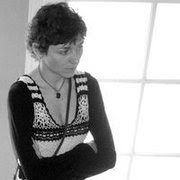My score
5/10
My review
After reading Pushed (see review), I wanted to pick up a book specifically about c-sections. This book is written for the moms of nearly one-third of the babies born: by Cesarean. Unapologetically and reassuringly, the authors try to cover the medical side of c-sections: why they happen, and what the doctors do while performing a c-section. The book lightly discusses the risks and benefits of the options available during Cesarean section, such as the methods of anaesthesia and postpartum pain management. In each chapter there are several quotes from moms having undergone c-section and their thoughts and feelings on their birth experience.
Happily, the book is supportive; the authors repeatedly express that it is not the mother's fault that she had a c-section, that she did not fail in labor, and that Cesarean is just another way to birth a baby. In fact, a baby born by c-section, just like a baby born vaginally, is born head-first, followed by the shoulders and then the rest of the body. I am giving this book a high score for the supportive attitude alone. Women having undergone a c-section need all the emotional support they can get, especially if they were planning and preparing for a vaginal birth.
There is a brief chapter on vaginal delivery after c-section (VBAC), which may be a welcome read for some women having undergone a Cesarean.
Appendix A, Questions to Ask Your Doctor, includes a comprehensive list of questions as well as the reasoning behind each question. These questions are well thought-out and, though perhaps an unpleasant topic for an expectant parent going for a vaginal birth, hopefully elicit some truthful answers from the doctor.
My criticisms of the book are as follows.
The mothers' stories are unconnected; they do not flow with the rest of the chapter of passage in which they fall. Even in short, three-sentence-long birth stories, everyone has a name (half-way through the book, I feel as though they're running out of simple names to choose from), and the individuals are referenced later in the book -- but it's hard to remember everyone. "You remember Jan and Paul from the introduction?" the tenth chapter begins. No, not really.
The birth stories leave out the difficulty of coping with major abdominal surgery as well as an infant in the first weeks post-partum. One birth story relates a mom coming home with her third child (all three by c-section) as well as a torn bladder. After the catheter was removed ten days after the birth, her bladder and urinary tract were "good as new." And the catheter? Oh, it "saved [her] having to get up to pee at night." Score one for positive thinking, score zero for the reality of a torn bladder, third c-section, and infant at home.
The whole book reminds me of a short pamphlet, maybe with the name So You're Going To Have a C-Section. Or the transcript to a fifteen-minute informational film: "These mothers have one thing in common: they delivered their baby by c-section." Dum-dum-dahhh.
Ways to reduce the risk of c-section are not discussed. Several of the birth stories, ending in c-section, have the mom arrive at the hospital too early (before 3cm dilation) -- that is, right after her water breaks, just like in the movies -- and, after a Pitocin drip does not dilate her fast enough (she nearly always asks for an epidural after the Pitocin is started), she is wheeled to the OR. The book would be smart to encourage women, with the support of their doctor or midwife, labor at home until active labor.
The book leaves out (in my opinion) some important details. The doctor puts some medicine in the IV. He is trained in fixing the problem with a special tool. What medicine, what tool? Please don't dumb down the information I feel is required.
Finally, for all the pages spent on the actual operation, the book barely touches on the postpartum healing period. Hire a doula, eat well, exercise a little, and -- controversially -- put out for your partner even if you do not want to. Wow, really? The point is hammered in a subsequent, lengthy chapter on contraception.




No comments:
Post a Comment